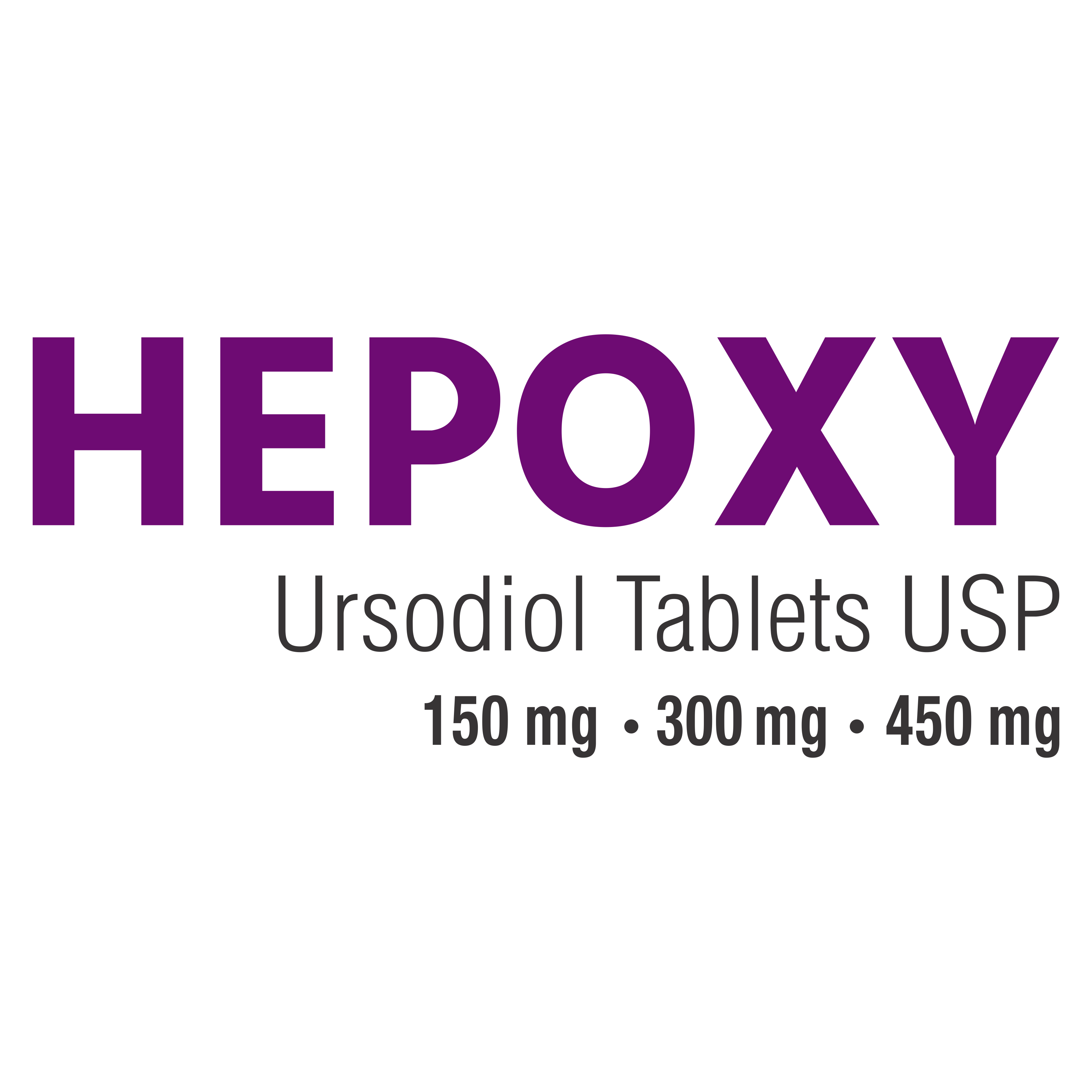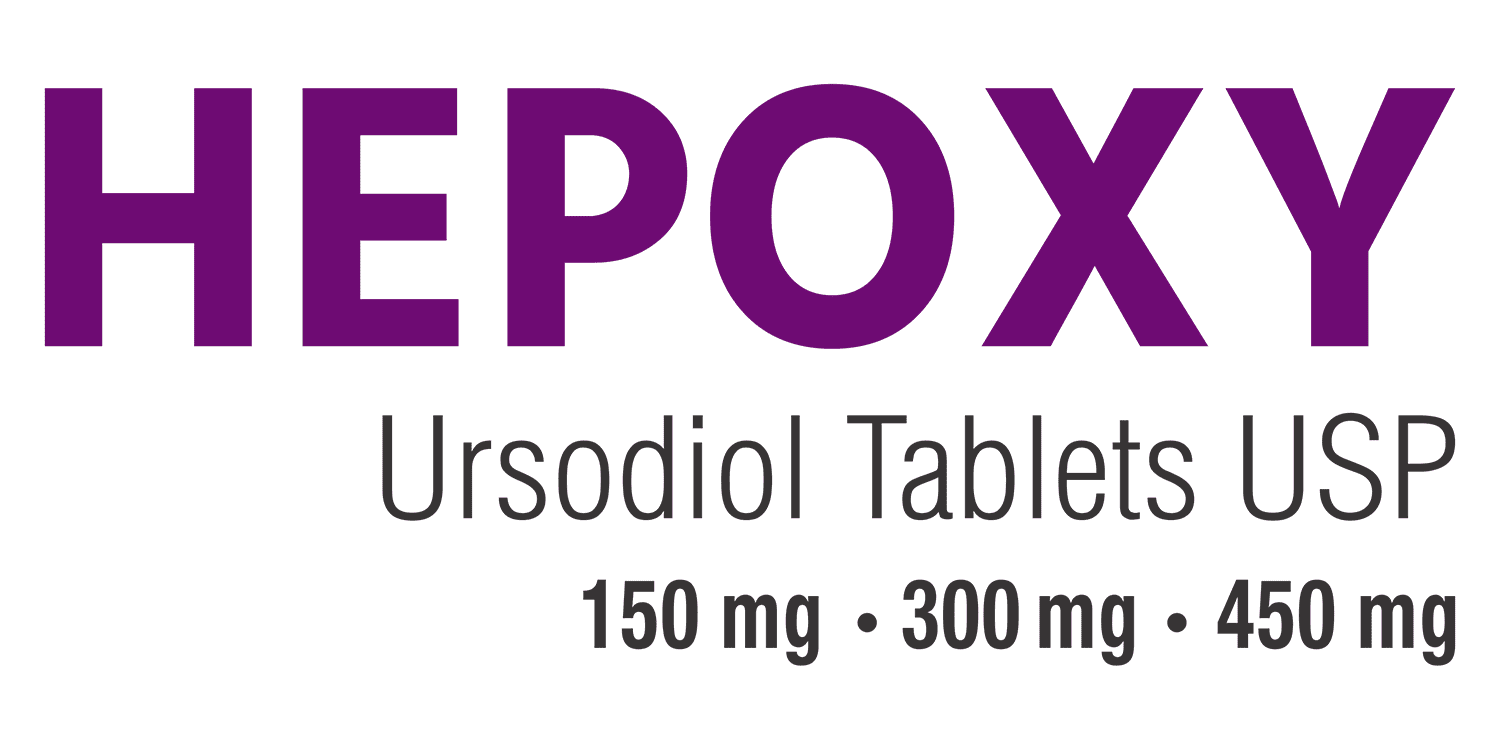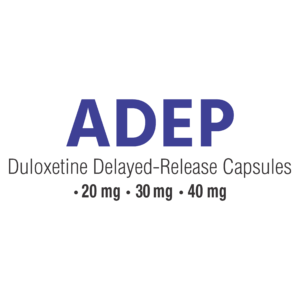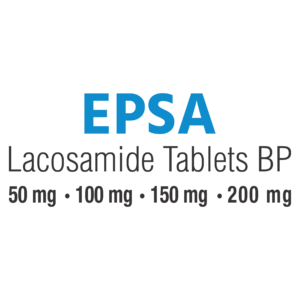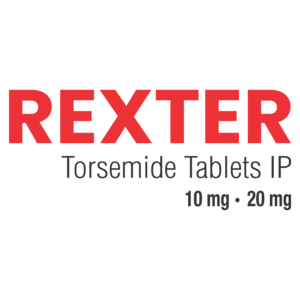HEPOXY
| Generic Name | Ursodiol Tablets USP |
| Strength | 150, 300, 450 mg |
| Dosage Form | Tablet |
Description
HEPOXY contain Ursodeoxycholic acid (UDCA) as the active substance. UDCA is a bile acid normally only found in small amounts in human bile. HEPOXY is used to dissolve gallstones that are rich in cholesterol. It is also used in the treatment of a condition called primary biliary cirrhosis and to treat children, aged 6 years to less than 18 years, who have liver problems associated with cystic fibrosis.
PATIENT INFORMATION LEAFLET
Read all of this leaflet carefully before you start taking this medicine because it contains important information for you.
– Keep this leaflet. You may need to read it again.
– If you have any further questions, ask your doctor or pharmacist.
– This medicine has been prescribed for you only. Do not pass it on to others. It may harm them, even if their signs of illness are the same as yours.
– If you get any side effects, talk to your doctor or pharmacist. This includes any possible side effects not listed in this leaflet.
What is in this leaflet:
- What HEPOXY is and what it is used for
- What you need to know before you take HEPOXY
- How to take HEPOXY
- What are the possible side effects of HEPOXY
- How to store HEPOXY
- Contents of the pack and other information
1. What HEPOXY is and what it is used for
HEPOXY contain Ursodeoxycholic acid (UDCA) as the active substance. UDCA is a bile acid normally only found in small amounts in human bile. HEPOXY is used to dissolve gallstones that are rich in cholesterol. It is also used in the treatment of a condition called primary biliary cirrhosis and to treat children, aged 6 years to less than 18 years, who have liver problems associated with cystic fibrosis.
2. What you need to know before you take HEPOXY
Do not take HEPOXY
- if you are allergic to Ursodeoxycholic acid
- if you have acute inflammation of the gall bladder or biliary tract
- if you have a blockage of the biliary tract
- if you have frequent episodes of biliary colic (recurrent pain in the upper abdomen)
- if your gall bladder does not work correctly
- if you have gallstones that are visible on an x-ray
- if you are pregnant or you think you might be pregnant
- if there is a chance you might become pregnant
- if you have a stomach or duodenal ulcer
- if you have a stoma because part of your bowel has been removed
- if you suffer from any liver problems (apart from primary biliary cirrhosis and liver problems associated with cystic fibrosis in children aged 6 years to less than 18 years)
Children with a condition where their bile ducts have not developed correctly (biliary atresia), who have had an operation (portoenterostomy) to treat this which has been unsuccessful or who have not had recovery of good bile flow, should not take HEPOXY.
If you are unsure if any of the above applies to you, please talk to your doctor or pharmacist.
Warnings and precautions
Talk to your doctor, pharmacist before taking HEPOXY. HEPOXY must be used under medical supervision.
- Your doctor should test your liver function regularly every four weeks for the first three months of treatment. After this time, it should be monitored at three month intervals.
- Please inform your doctor immediately if you have diarrhoea, as this might require a reduction in the dose or discontinuation of the treatment with HEPOXY.
- If you are being treated for gallstones, your doctor will monitor the progress of the dissolution of your gallstones.
- If you are being treated for primary biliary cirrhosis, in rare cases your symptoms may worsen at the beginning of your treatment e.g. the itching may increase. If this happens please inform your doctor immediately, as you might require a reduction in your dose of HEPOXY.
- Excessive dietary intake of calories and cholesterol should be avoided while you are taking HEPOXY.
Other medicines and HEPOXY
Tell your doctor or pharmacist if you are taking, have recently taken or might take any other medicines, including those listed below:
- Colestyramine, Colestipol (medicines to lower your blood cholesterol level), Charcoal or antacids containing Aluminium (indigestion remedies). If you must take a medicine containing any of these ingredients, it should be taken at least two hours before or after HEPOXY.
- Ciclosporin (an immunosuppressant)
- Ciprofloxacin or Dapsone (antibiotics)
- Rosuvastatin or Clofibrate (used to lower cholesterol)
- oral contraceptives or any other female hormones, such as estrogenic hormones or hormone replacement therapy (HRT).
- Female patients taking HEPOXY for the dissolution of gallstones should only use non-hormonal contraceptive methods e.g. barrier methods, because hormonal contraceptives may stimulate the formation of gallstones.
It may still be safe for you to take HEPOXY, your doctor or pharmacist will be able to advise you.
Please tell your doctor or pharmacist if you are taking or have recently taken any other medicines, including medicines obtained without a prescription.
Pregnancy and breast-feeding
Ask your doctor or pharmacist for advice before taking any medicine during pregnancy or while breast-feeding.
- In the absence of adequate evidence of safety in pregnancy, HEPOXY should not be taken if you are pregnant, think you might be pregnant or are trying to become pregnant. Use a reliable method of contraception during treatment with HEPOXY.
- Female patients taking HEPOXY for the dissolution of gallstones should only use non-hormonal contraceptive methods e.g. barrier methods, because hormonal contraceptives may stimulate the formation of gallstones. The levels of the active ingredient of this medicine in breast milk are low and are not expected to cause your baby any problems.
Driving and using machines
HEPOXY will have little or no influence on your ability to drive or use machines.
3. How to take HEPOXY
Always take HEPOXY exactly as your doctor or pharmacist has told you. You should check with your doctor or pharmacist if you are not sure.
- HEPOXY should be taken orally (by mouth).
- The recommended dose which is used to dissolve cholesterol-rich gallstones in adults is two or three tablets daily, taken in two divided doses after meals.
- The recommended adult dose for the treatment of primary biliary cirrhosis is two to five tablets daily, taken in two to four divided doses.
- However, these doses may vary depending on your body weight. Elderly patients will be prescribed a dose depending on their body weight.
Use in children and adolescents
- The dose for the dissolution of cholesterol-rich gallstones in children is calculated using their body weight and is 8-10 mg per kg of body weight per day, taken in two divided doses after meals.
- The dose for children with cystic fibrosis, aged 6 years to less than 18 years, is calculated using their body weight. The usual daily starting dose is 20 mg per kg of body weight in two to three divided doses, with a further increase to 30 mg per kg of body weight per day if necessary.
- In patients with primary biliary cirrhosis, the symptoms may worsen at the start of treatment, e.g. the itching may increase. This only occurs in rare cases. If this happens, therapy can be continued with a lower daily dose of HEPOXY. Each week, your doctor will then gradually increase the daily dose, until you reach the required dose.
If you have any questions about the dose you have been prescribed please ask your doctor or pharmacist. You may need to take HEPOXY for many months for them to work. During this time your doctor will monitor your condition.
If you take more HEPOXY than you should
This may cause diarrhea. Contact your doctor, pharmacist or nearest hospital casualty department immediately if you have taken more tablets than you should, and take your medicine and this leaflet with you.
If you forget to take HEPOXY
If you forget a dose, take it as soon as you remember. Do not take a double dose to make up for a forgotten dose.
If you stop taking HEPOXY
Do not stop taking HEPOXY without first checking with your doctor. If you have any further questions on the use of this medicine, ask your doctor or pharmacist.
4. What are the possible side effects of HEPOXY
Like all prescription medicines, HEPOXY may cause side effects, although not everyone gets them.
- Diarrhoea is a side effect that has been reported commonly (may affect up to 1 in 10 people). Please inform your doctor immediately if you have diarrhoea, as this might require a reduction in the dose or discontinuation of the treatment with HEPOXY.
- If you are being treated for primary biliary cirrhosis, in rare cases your symptoms may worsen at the beginning of your treatment e.g. the itching may increase.
Other side effects
Common Side effects (may affect up to 1 in 10 people)
- pasty stools.
Very rare (may affect up to 1 in 10,000 people)
During the treatment of primary biliary cirrhosis:
- severe right upper abdominal pain
- worsening of liver disease (this partially improves after treatment is stopped)
- hardening of gallstones due to build up of calcium
- a red itchy rash.
If this happens, please inform your doctor immediately, as you might require a reduction in your dose of HEPOXY.
Reporting of side effects
If you get any side effects, talk to your doctor or pharmacist. This includes any possible side effects not listed in this leaflet.
5. How to store HEPOXY
Keep this medicine out of the sight and reach of children. Do not use this medicine after the
expiry date which is stated on the blister and carton. The expiry date refers to the last day of that month.
Store this medicine at normal room temperature (below 25ºC).
Do not throw away any medicines via wastewater or household waste. Ask your pharmacist how to throw away medicines you no longer use. These measures will help protect the environment.
6. Contents of the pack and other information
What HEPOXY contains
The active ingredient is Ursodeoxycholic acid (UDCA).
HEPOXY 150
Each film coated tablet contains:
Ursodeoxycholic Acid EP 150 mg
Colours: Erythrosine Lake & Titanium Dioxide
HEPOXY 300
Each film coated tablet contains:
Ursodeoxycholic Acid EP 300 mg
Colours: Erythrosine Lake & Titanium Dioxide
HEPOXY 450
Each film coated tablet contains:
Ursodeoxycholic Acid EP 450 mg
Colours: Erythrosine Lake & Titanium Dioxide
What HEPOXY looks like and contents of the pack
HEPOXY 150 is pink coloured, round, biconvex, film coated tablets. HEPOXY tablets are packed in PVDC Blister. The pack size is 10 x 10 tablets in a printed paper carton with packing insert.
HEPOXY 300 is pink coloured, round, biconvex, film coated tablets with breakline on one side. HEPOXY tablets are packed in PVDC Blister. The pack size is 10 x 10 tablets in a printed paper carton with packing insert.
HEPOXY 450 is pink coloured, oblong, biconvex, film coated tablets with breakline on one side. HEPOXY tablets are packed in PVDC Blister. The pack size is 10 x 10 tablets in a printed paper carton with packing insert.

